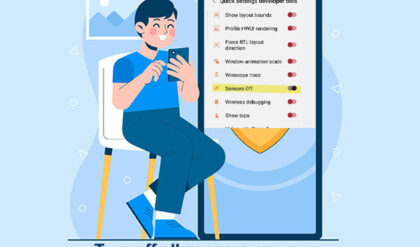
Tips for Safely Charging Your Phone
To ensure the safety and long life of your phone’s battery, here are some essential tips to follow:
Use the Original Charger
It is highly recommended that you use the original charger that comes with your phone. Manufacturers design these chargers specifically for their devices, ensuring compatibility and safe charging parameters.
Avoid Overcharging
Overcharging your phone battery can reduce battery life and pose a safety risk. To prevent unnecessary stress on the battery, it’s best to unplug your phone once it reaches 100% charge.
Maintain Optimal Charging Levels
Keeping your phone’s battery level between 20% and 80% is considered optimal for long-term battery health. Frequent deep discharges and high charge levels can accelerate battery degradation.
Keep the Battery Cool
Excessive heat can damage your phone’s battery and affect its overall performance. Avoid exposing your device to direct sunlight or extreme temperatures while charging.
Disconnect When Fully Charged
Once your phone reaches full charge, it’s advisable to disconnect it from the charger. Leaving it connected for extended periods can increase the battery’s internal stress and reduce its lifespan.
Common Charging Mistakes to Avoid
While following the above tips can significantly improve battery life, it’s equally important to avoid common charging mistakes that can negatively impact your phone’s battery health. Let’s explore a few of these mistakes:
Using Cheap and Unauthorized Chargers
While using low-quality or unauthorized chargers may initially save you money, they can potentially damage your phone’s battery. These chargers may not meet safety standards, and their inconsistent voltage or current output can harm the battery cells.
Exposing the Phone to Extreme Temperatures
Extreme hot and cold temperatures can harm your phone’s battery. Avoid charging your device in direct sunlight, near heat sources, or in freezing conditions.
Charging Overnight
Leaving your phone plugged in overnight can lead to overcharging, which can negatively impact battery health. It’s advisable to disconnect the charger once your device reaches full charge or use features like “battery optimization” offered by some smartphones.
Avoid using your phone while it’s charging
using your phone while it’s charging may cause phone overheating, most new phone models turn off the phone when it becomes hot to prevent the battery from exploding.
in a recent incident reported by hindustantimes.com, a phone battery exploded and killed an eight-year-old girl in Kerala, India,
Also, incident reported by DOROTHY KOOMSON
OnePlus 8 Pro battery exploded. The phone was not charging and it was idle.
— Debayan Roy (Gadgetsdata) (@Gadgetsdata) May 21, 2023
The explosion didn't harm the user.https://t.co/Fzkk4m2eT4 pic.twitter.com/2diVkm3qTW
Best Practices for Battery Longevity
Besides safe charging practices, there are additional best practices you can adopt to enhance your phone battery’s longevity:
Battery Calibration
Calibrating your phone’s battery periodically helps the device accurately measure its remaining charge. It involves fully charging the battery and then letting it discharge completely before charging again.
Regular Software Updates
Keeping your phone’s software up to date is essential for battery optimization. Manufacturers often release updates that address power management issues, improving overall battery performance.
Battery Health Monitoring
Some smartphones provide built-in battery health monitoring tools. Monitoring your battery’s health can give you insights into its current capacity and help you identify any significant deterioration.
Power Saving Techniques
Utilizing power-saving features, such as reducing screen brightness, disabling unnecessary background processes, and managing app usage, can significantly extend your phone’s battery life.
Understanding Battery Charging
Battery Types
Most smartphones today use Lithium-ion (Li-ion) or Lithium-polymer (Li-po) batteries. These batteries offer high energy density, longer lifespan, and are lightweight, making them ideal for portable devices like smartphones. It’s important to note that the charging process may vary slightly between different battery types, but the general principles remain the same.
Battery Charging Process
Charging a phone battery involves transferring electrical energy to the battery cells and replenishing their charge. The charging process typically consists of the constant current (CC) stage and the constant voltage (CV) stage. During the CC stage, the charger supplies a consistent current to the battery until it reaches a certain voltage. The charger maintains a constant voltage in the CV stage to complete the charging process.
FAQs
Q1: Can I use any charger to charge my phone? A: While using chargers from other devices is possible, it is best to use the original charger provided with your phone to ensure safe and optimal charging.
Q2: Is it necessary to calibrate my phone’s battery? A: Battery calibration is not always necessary for all smartphones. However, it can help accurately measure the remaining charge and maintain overall battery health.
Q3: Can extreme temperatures damage my phone’s battery? A: Yes, exposing your phone to extreme temperatures, whether hot or cold, can damage the battery and affect its performance. It’s best to avoid such conditions.
Q4: Can I leave my phone charging overnight? A: Leaving your phone charging overnight can lead to overcharging, which is not ideal for battery health. It’s recommended to disconnect the charger once your device reaches full charge.
Q5: How often should I update my phone’s software? A: Regularly updating your phone’s software ensures you have the latest power optimization features and bug fixes. Check for updates periodically or enable automatic updates for convenience.
Image by rawpixel.com on Freepik



